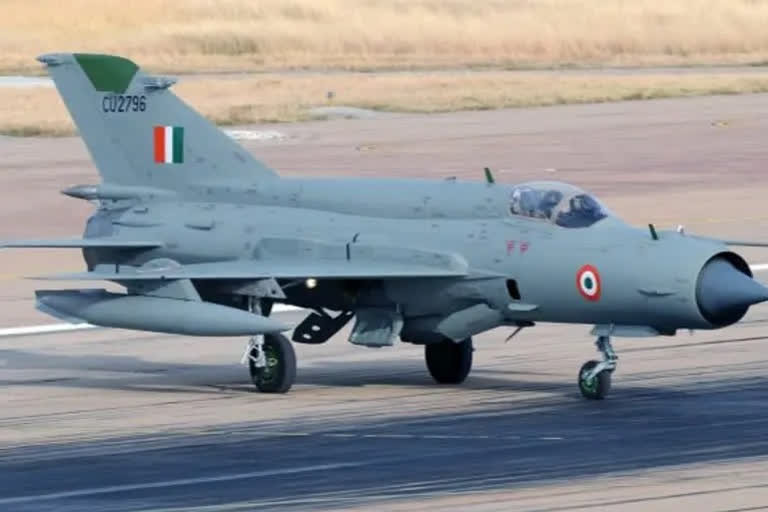New Delhi: At about 9:10 pm on Thursday night, a tragic bit of history repeated yet again over the night skies of Rajasthan’s Barmer when a twin-seater trainer Mig-21 'Bison' went up in flames mid-air. In the seconds that followed, two IAF pilots — Wing Commander Mohit Rana and Flight Lieutenant Advitiya Bal and their ill-fated flying machine — added to the growing numbers of fatalities of trained air warriors.
While the IAF refused to provide the number of pilots killed in Mig-21 crashes, till date about 200 IAF pilots are believed to have lost their lives. With Thursday night’s crash, a total of 293 Mig-21s have crashed since the induction of the Russian-origin air fighter into the IAF in 1963. The percentage involved in crashes out of the total fleet size of 946 MiG-21s works out to a horrific 30.97%.
While the initial lot of Mig-21s was bought off the shelf from Russia, more than half of them were later license-produced in India. While Thursday’s crash was the first one in 2022, there have been six Mig-21 crashes since the beginning of 2021 with the last one prior to Thursday taking place again in Rajasthan’s Jaisalmer on December 24, 2021 killing the pilot Wing Commander Harshit Sinha.
Also read: IAF releases names of pilots killed in last night's MiG-21 crash
In terms of sheer number of MiG-21 crashes, the worst one in IAF’s history till date was in 1999 when 16 crashed during the course of the Kargil war. Before Kargil, the 1971 war for the Liberation of Bangladesh from Pakistan saw 11 crashes. In 2016, an internal audit report carried out by the defence ministry had concluded: “Since 1970, more than 170 Indian pilots and 40 civilians have been killed in MiG-21 accidents.”
The report had identified various structural defects including the canopy design which hampers visual contact with the runway and the fact that the single-engine makes the Mig-21 vulnerable to bird hits and engine failure. The number of accidents also picked up after the USSR collapsed in 1991 when more than 40 percent or 119 of the aircraft fleet actually crashed in the 15-year-period from 1991-2005.
The defence ministry’s internal audit report explains it thus: “The main reason for this was that spares and other critical equipment were not coming from MIG Russian Corporation after the fall of USSR… The IAF had to depend on CIS countries and HAL (Hindustan Aeronautics Limited) to source spare parts for its MiGs.”
The core technology of the Soviet-era Russian-origin aircraft is from the 1950s. While the MiG-21 was supposed to have been phased out from the IAF in the 1990s, it was upgraded and introduced as the ‘Bison’.
Currently, the IAF operates four squadrons of MiG-21 ‘Bison’ aircraft, with 16-18 aircraft in each squadron which are nearing the end of their operability in less than five years. While one squadron is set to retire in less than two months, all the remaining three squadrons are expected to retire in about three years.



